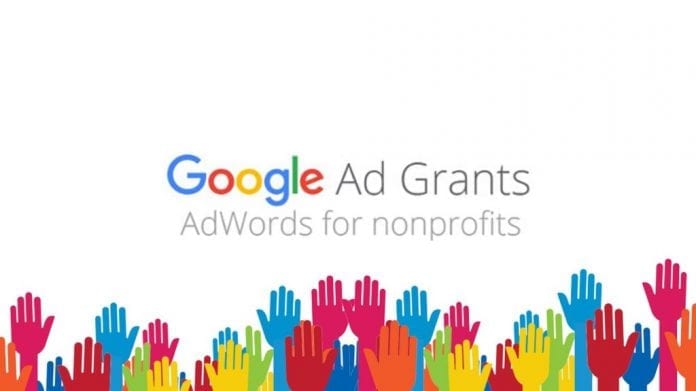A lot of people who work in marketing for the nonprofit/ charity sector should add the words “miracle worker” to their job title.

Turning nothing into something is just a daily task. It’s some of the most rewarding work you can ever do. However, there is no denying that it’s also the hardest.
If you do any sort of marketing for a nonprofit or charity, the odds are good that you have to deal with at least one of these issues.
1. Budgetary Constraints

This is always the #1 challenge in nonprofit or charity marketing: Having to produce with a modest budget.
Budgetary constraints lead to pretty-much-everything-else constraints. For example, you might have to try to make do with an outdated website because you can’t afford to update it. It’s common for a new website to be a “Maybe next year” thing for 2 or 3 years in a row.
You need to make every single dollar count. When you build your website, you should find someone that has a history of creating modern, attractive and functional websites for organizations like yours. Look for a professional company such as WildApricot.com — one that brings plenty of experience to the field and will help you build the exact site you envision.
Bonus Tip: You should definitely look into Google’ Ad Grants, which could give you up to $10,000 to spend on Google Ads. That could obviously go a very long way in bringing traffic and donors to your site.

To qualify, you need to:
- Hold valid charity status. Governmental entities and organizations, hospitals and medical groups, schools, academic institutions and universities are not eligible.
- Have a high-quality website that meets the Ad Grants website policy.
- Get approved through the Ad Grants pre-qualification process.
Not enough nonprofits are even aware that this program exists, which could be costing them an immeasurable amount of web traffic, donations and members.
To meet the program’s “high-quality” website standards, you may have to update your site. However, an extra $10,000 per month in Google Ads funding could help you make the business case for finally getting your site updated.
2. Sending Personalized Messages at Scale

Over 80% of surveyed nonprofit respondents said that they “relied heavily on batch-and-blast email communications.”
This is not surprising. Email blasts are a cost-effective way to spread your message to your members and would-be members. It is particularly effective in the nonprofit space, as emails have a very respectable average open rate of about 28%.
However, personalized messages always perform much better. Therein lies the challenge.
You don’t have the time or the staff to send a few thousand personalized emails. Your best bet is segmenting your audience into as many buckets as you can. That way, you’re not sending the same canned messages to both would-be and current members.
3. Content Marketing

Only about one-in-four nonprofit marketers said their organizations are effective at content marketing.
The budgetary constraints we spoke of earlier can really show up when it’s time to generate content. That means your content is often written by you, or:
- Other staff members
- Volunteers
- Low-pay freelancers
This means producing any volume of content feels like a win. So, you need to focus on making what you publish count. Focus on quality over quantity.
Fortunately, it is really easy to leverage storytelling in the nonprofit sector. Your organization has likely touched a number of lives in the community. Their stories make amazing content that resonates. It’s also easily-digestible, clickable and shareable.
4. Social Media is Pay-to-Play

In an effort to keep their followers happy, most social media platforms are now making it more difficult (and expensive) to get your content into your target audience’s social feed.
A few years ago, you could see real social traction with a bit of creativity and resourcefulness. Now, however, social media is mainly a pay-to-play game. This means you need to focus on making your ad spend count.
Focus on storytelling in the way we discussed above and you will be creating shareable content. People share stories that strike an emotional cord.
5. Defining Clear Content Goals

This problem is not exclusive to the nonprofit sector. It plagues businesses in every industry.
Any piece of content you publish should serve a purpose and have a clear goal, such as:
- To rank (SEO-focused)
- To get shared (Social media focused)
- To convert (Focused on getting people to donate or come to an event)
If you don’t publish content with one of these goals in mind, you’re publishing for the sake of publishing.
At the same time, trying to achieve more than one of those goals is also bad. This can water down your focus and result in a piece that tries to do two things at once, but succeeds at neither.
The first thing you need to do is ensure that everyone in your organization is on the same page when it comes to knowing exactly what your blog’s goal is. One person may believe that the blog’s goal is to earn social traction. Another person may say the blog is there to serve as a publicity tool. Define your blog’s purpose and make sure everyone is aware of it.
Yes, your blog (as a whole) can be there to serve all 3 purposes. However, ensure that each individual piece of content has a single goal defined before you write it. It may help to come up with a 6-12 month content calendar and bucket your content according to each goal.

Of course, nonprofit marketers face far more challenges than we could fit into this blog. However, the ones we covered today likely resonated with you on a certain level.
We’re fairly sure you’re currently facing budgetary limitations, which is leading to struggles competing for social media space and sending targeted messaging at scale. There is also a great chance these budgetary limitations mean that you have to write content that is expected to rank, get shared and convert. You’re not alone. We feel your pain.
We don’t have to tell you that it’s all about making every penny count. But, hopefully, we have given you some ideas and inspiration to help you make your own marketing miracles happen.









